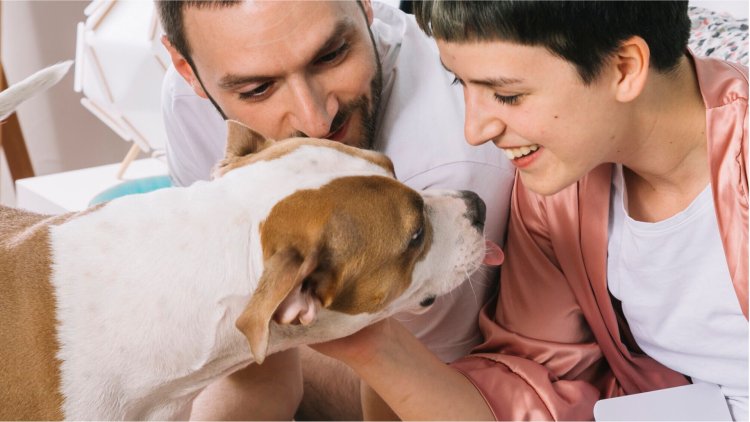Supervet on the Importance of Pet Insurance
In recent years, the bond between pets and their owners has grown stronger, transforming pets from mere companions into beloved family members.

In recent years, the bond between pets and their owners has grown stronger, transforming pets from mere companions into beloved family members. With this deepening relationship comes a heightened awareness of the responsibilities of pet ownership, including ensuring their health and well-being. One of the most crucial aspects of responsible pet ownership is having pet insurance. This article, guided by insights from veterinary professionals, explores the significance of pet insurance, its benefits, and how it can profoundly impact both pet owners and their furry friends.
Understanding Pet Insurance
Pet insurance is designed to alleviate the financial burden associated with veterinary care, providing coverage for a range of medical expenses. The concept is akin to health insurance for humans, offering peace of mind and financial protection against unexpected health issues. There are several types of pet insurance plans, each catering to different needs:
A. Types of Pet Insurance Plans
-
Accident-Only Plans: These plans cover expenses related to injuries caused by accidents, such as fractures, lacerations, or poisoning. They are typically more affordable but do not cover illnesses.
-
Accident and Illness Plans: This more comprehensive option covers both accidental injuries and illnesses, including common conditions like infections, allergies, and digestive issues.
-
Comprehensive Plans: Also known as wellness or complete plans, these cover a wide range of health issues, including accidents, illnesses, and preventive care. They may include coverage for routine check-ups, vaccinations, and dental care.
B. Common Terms and Conditions
Understanding the key terms associated with pet insurance is crucial for making informed decisions:
-
Deductibles: The amount you pay out-of-pocket before the insurance coverage kicks in. Deductibles can be annual or per-incident.
-
Co-Pays: The percentage of the bill you are responsible for paying after the deductible has been met.
-
Coverage Limits: The maximum amount your insurance will pay for claims, either per year or per incident.
-
Exclusions: Specific conditions or treatments that are not covered by the policy, such as pre-existing conditions or certain breed-specific issues.
The Role of Pet Insurance in Veterinary Care
Pet insurance plays a vital role in ensuring that pets receive the best possible care without financial constraints. Here’s how it supports both veterinary care and pet owners:
A. Supporting Access to Quality Veterinary Care
-
Covering Unexpected Medical Expenses: Veterinary bills can quickly accumulate, especially for serious conditions or emergencies. Pet insurance helps cover these unexpected costs, allowing pet owners to focus on their pet's health rather than financial concerns.
-
Facilitating Early Intervention and Preventive Care: With insurance coverage, pet owners are more likely to seek veterinary care at the first sign of illness or injury. This early intervention can prevent minor issues from developing into more serious, costly conditions.
B. Examples of Common Scenarios Where Pet Insurance is Beneficial
-
Emergency Surgeries: Imagine your pet suffers a sudden injury, such as a fractured leg or an abdominal blockage. Emergency surgeries can be expensive, but with insurance, you can manage these costs more effectively and ensure your pet gets the necessary treatment.
-
Chronic Illness Management: Pets can develop chronic conditions like diabetes, arthritis, or kidney disease. Ongoing treatment for these conditions can be financially burdensome. Insurance helps cover the costs of long-term medications, regular vet visits, and necessary treatments.
-
Specialized Treatments: Some pets require specialized care, such as surgery performed by a veterinary specialist or advanced diagnostic tests. Pet insurance can help offset these high costs, making specialized care more accessible.
Benefits of Pet Insurance
Pet insurance offers numerous benefits that contribute to the overall well-being of pets and their owners:
A. Financial Protection Against High Veterinary Costs
The primary advantage of pet insurance is financial protection. Without insurance, veterinary bills for emergencies or serious conditions can be overwhelming. Insurance helps manage these costs, reducing the financial strain on pet owners and enabling them to make decisions based on their pet's health rather than their budget.
B. Peace of Mind for Pet Owners
Knowing that you have insurance coverage provides peace of mind. You can rest assured that if your pet requires unexpected medical treatment, you won’t have to choose between your pet’s health and your financial stability.
C. Improved Health Outcomes for Pets
Pet insurance can lead to better health outcomes. When financial constraints are less of a concern, pet owners are more likely to seek timely veterinary care, which can result in earlier diagnoses and more effective treatments.
D. Flexibility in Choosing Veterinary Care
With insurance, pet owners have more flexibility in choosing veterinary care. They are less restricted by cost considerations and can select veterinarians and specialists based on their pet's needs rather than their pricing.
Real-Life Testimonials and Case Studies
A. Case Study 1: Unexpected Medical Expenses
One example of the impact of pet insurance is the story of Max, a Labrador Retriever who ingested a foreign object, leading to an emergency surgery. The cost of the surgery and subsequent recovery was significant, but Max’s owners had insurance coverage. The policy covered a large portion of the expenses, allowing them to focus on Max's recovery without financial stress.
B. Case Study 2: Chronic Condition Management
Bella, a cat diagnosed with diabetes, required daily insulin injections and regular vet visits. Her owners had a comprehensive pet insurance plan, which helped cover the cost of her ongoing treatment, including medication and monitoring. This coverage ensured Bella received the care she needed to manage her condition effectively.
C. Testimonials from Veterinarians
Veterinarians frequently observe the benefits of pet insurance firsthand. Dr. Lisa Martinez, a veterinarian in Houston, notes, “Pet insurance allows pet owners to make medical decisions based on what is best for their pet, rather than what they can afford. It’s a crucial tool in providing quality care.”
Choosing the Right Pet Insurance Plan
Selecting the right pet insurance plan requires careful consideration of several factors:
A. Factors to Consider When Selecting a Plan
-
Coverage: Ensure the plan covers the types of incidents and conditions relevant to your pet. Comprehensive plans are often the best choice for broad protection.
-
Cost: Compare premiums, deductibles, and co-pays across different providers. Choose a plan that fits your budget while providing adequate coverage.
-
Exclusions: Review the policy for any exclusions or limitations. Make sure you understand what is not covered, such as pre-existing conditions or breed-specific issues.
B. Tips for Evaluating and Comparing Different Providers
-
Read Reviews: Look for reviews from other pet owners and veterinarians to gauge the reputation of insurance providers.
-
Check Coverage Details: Compare the specifics of coverage, including limits, exclusions, and additional benefits.
-
Evaluate Customer Service: Consider the provider’s reputation for customer service and ease of filing claims.
C. Common Mistakes to Avoid
-
Ignoring Exclusions: Ensure you understand what is not covered to avoid surprises when filing a claim.
-
Choosing Based on Premiums Alone: While cost is important, also consider the coverage provided. A lower premium might mean less comprehensive coverage.
-
Overlooking Policy Details: Pay attention to deductibles, co-pays, and coverage limits. These details significantly impact your out-of-pocket expenses.
The Future of Pet Insurance
Pet insurance is evolving to meet the changing needs of pet owners and their pets:
A. Trends and Advancements
-
Technology Integration: Advances in technology are making it easier to manage pet insurance policies through mobile apps and online platforms.
-
Customization: Insurance providers are offering more customizable plans, allowing pet owners to tailor coverage to their specific needs.
B. Evolving Industry Needs
-
Increased Coverage Options: As veterinary medicine advances, insurance providers are expanding coverage options to include new treatments and technologies.
-
Enhanced Customer Experience: Providers are focusing on improving the customer experience with more transparent pricing, faster claims processing, and better customer support.
C. Predictions for the Future
The future of pet insurance will likely see continued growth in coverage options and advancements in technology. As more pet owners recognize the benefits of insurance, the industry will adapt to offer more comprehensive and flexible solutions.
Final Thoughts
Pet insurance is an essential component of responsible pet ownership, offering financial protection, peace of mind, and access to quality veterinary care. By understanding the different types of plans, benefits, and considerations when choosing coverage, pet owners can make informed decisions that ensure their pets receive the best possible care. As the pet insurance industry continues to evolve, it will provide even more opportunities for pet owners to protect their furry companions and manage the costs of veterinary care effectively.
Additional Resources
A. Links to Reputable Pet Insurance Providers
- State Farm Pet Insurance
- The Hartford Pet Insurance
- Chubb Pet Insurance
- Liberty Mutual Pet Insurance
B. Contact Information for Veterinary Clinics Offering Insurance Advice
- Houston Veterinary Specialists
- Briarcrest Veterinary Clinic
C. Recommended Reading and Resources
- “The Ultimate Guide to Pet Insurance” by Dr. Sarah Jones
- “Understanding Pet Health Insurance: A Comprehensive Guide” by John Doe
FAQ:
1. What is pet insurance, and how does it work?
Pet insurance is a policy that helps cover veterinary expenses for pets. It works similarly to health insurance for humans. You pay a monthly premium, and in return, the insurance helps cover the cost of medical treatments, depending on the plan you choose. Plans can vary in terms of coverage, deductibles, and co-pays.
2. What types of pet insurance plans are available?
There are several types of pet insurance plans:
- Accident-Only Plans: Cover injuries caused by accidents but not illnesses.
- Accident and Illness Plans: Cover both accidents and illnesses.
- Comprehensive Plans: Offer coverage for accidents, illnesses, and sometimes preventive care like vaccinations and routine check-ups.
3. Why is pet insurance important?
Pet insurance is important because it helps manage unexpected veterinary costs, provides financial protection, and ensures pets receive timely care without financial constraints. It can cover expensive treatments, emergencies, and chronic conditions, offering peace of mind to pet owners.
4. How does pet insurance support veterinary care?
Pet insurance supports veterinary care by covering a portion of medical expenses, which allows pet owners to seek timely treatment without worrying about the cost. This support is crucial for emergency surgeries, chronic condition management, and specialized treatments.
5. What are some real-life examples of how pet insurance has been beneficial?
One example is a dog that needed emergency surgery after ingesting a foreign object. With insurance, the significant surgical costs were partially covered, easing the financial burden on the owner. Another example is a cat with diabetes whose ongoing treatment was made affordable through insurance coverage, allowing for effective management of the condition.
6. What factors should I consider when choosing a pet insurance plan?
When choosing a pet insurance plan, consider:
- Coverage: Ensure the plan covers the types of incidents and conditions relevant to your pet.
- Cost: Compare premiums, deductibles, and co-pays to find a plan that fits your budget.
- Exclusions: Review the policy for exclusions and limitations to understand what is not covered.
7. How do I evaluate different pet insurance providers?
To evaluate different providers, read reviews from other pet owners and veterinarians, compare coverage details and costs, and consider the reputation of the provider for customer service and claims processing. Make sure to check for transparency in pricing and coverage.
8. Are there common mistakes to avoid when purchasing pet insurance?
Common mistakes include ignoring policy exclusions, choosing a plan based solely on lower premiums, and overlooking important policy details like deductibles and coverage limits. It’s essential to understand what the policy covers and what it doesn’t.
9. What trends are shaping the future of pet insurance?
The future of pet insurance includes trends such as increased use of technology for managing policies, more customizable coverage options, and advancements in veterinary medicine. The industry is evolving to offer more comprehensive and flexible solutions for pet owners.
10. How can pet owners find more information and resources about pet insurance?
Pet owners can find more information through reputable pet insurance providers, contact local veterinary clinics for advice, and consult recommended readings and resources. Some useful links include those to insurance providers’ websites and veterinary clinic contact information.
What's Your Reaction?



















